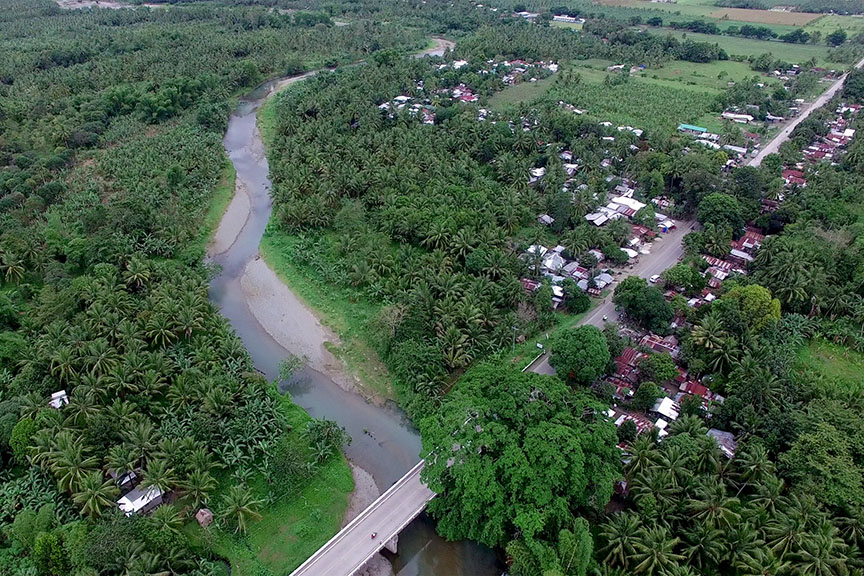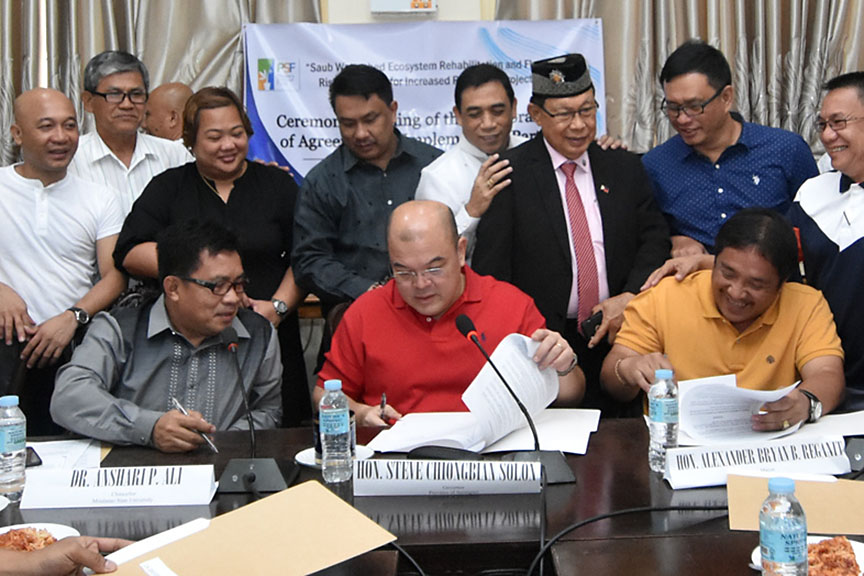GENERAL SANTOS CITY (MindaNews / 1 Feb) – The provincial government of Sarangani has forged a partnership with the state-run Mindanao State University (MSU) here and two non-government organizations for the implementation of a P103-million watershed rehabilitation project in Maitum town.
 Saub River in Maitum, Sarangani province. Photo courtesy of Sarangani Communications Service
Saub River in Maitum, Sarangani province. Photo courtesy of Sarangani Communications Service
The local government signed memorandums of agreement earlier this week with MSU, Mahintana Foundation, Inc. and Conrado and Ladislawa Alcantara Foundation, Inc. (CLAFI) to facilitate its proper rollout.
Sarangani Gov. Steve Chiongbian Solon said the three entities will mainly provide technical assistance to the provincial government in terms of research and formulation of a watershed management plan for the critical Saub River in Maitum.
“They will also help us in the monitoring and evaluation of the project’s implementation,” he said in a statement.
The governor said the signing of the agreements was part of the ongoing preparatory processes for the expected release by next month of the P93.5-million grant from the national government, through the flagship finance climate program People’s Survival Fund (PSF).
He said he is set to meet this month with Finance Secretary and PSF board chair Carlos Dominguez III for a grant negotiation to facilitate the release of the funding.
“We’re hoping to start the project’s first phase implementation within the first quarter,” Solon said.
 Signing of the memorandum of agreement on Wednesday (30 January 2019). Photo courtesy of Sarangani Communications Service
Signing of the memorandum of agreement on Wednesday (30 January 2019). Photo courtesy of Sarangani Communications Service
PSF approved the grant for the project on July 6, 2018 following a series of engagements with the local government.
The project, dubbed “Watershed Ecosystem Rehabilitation and Flood Risk Reduction for Increased Resilience,” costs a total of P103 million.
PSF will shoulder P93.59 million of the funding requirement while the provincial government will provide a counterpart fund of P9.32 million.
The provincial government of Sarangani will manage the overall implementation of the project and will be working closely with the municipal government of Maitum.
Maitum will provide technical, administrative and other support in all stages of the project implementation.
In the next three years, the project will focus on the creation of a watershed governance system; build the capacity of the municipal government, development partners, beneficiaries and other stakeholders to adapt to flood risks and other impacts of climate change variability; establish river bank protection mechanisms; and help alleviate poverty in the area through agro-forestry development.
Cornelio Ramirez, executive director of the Sarangani Environmental Conservation and Protection Center (ECPC), said the project is aimed to improve the resilience of Saub watershed ecosystem to floods and other associated risks caused by the impact of climate change.
A report released by ECPC cited flooding as the most common hazard experienced in areas traversed by the Saub River.
Some 10,001 hectares of its immediate environs are considered as highly prone to flooding, 5,881.65 hectares are facing moderate risk and 2,604.26 hectares with low risk.
The Saub watershed covers nine barangays with a total of 1,747 households living along its 100-meter riparian zone.
Since 2010, several “extreme flooding” incidents were recorded in the area, which led a number of deaths and the destruction to agricultural and structural properties, it said.
(MindaNews)
